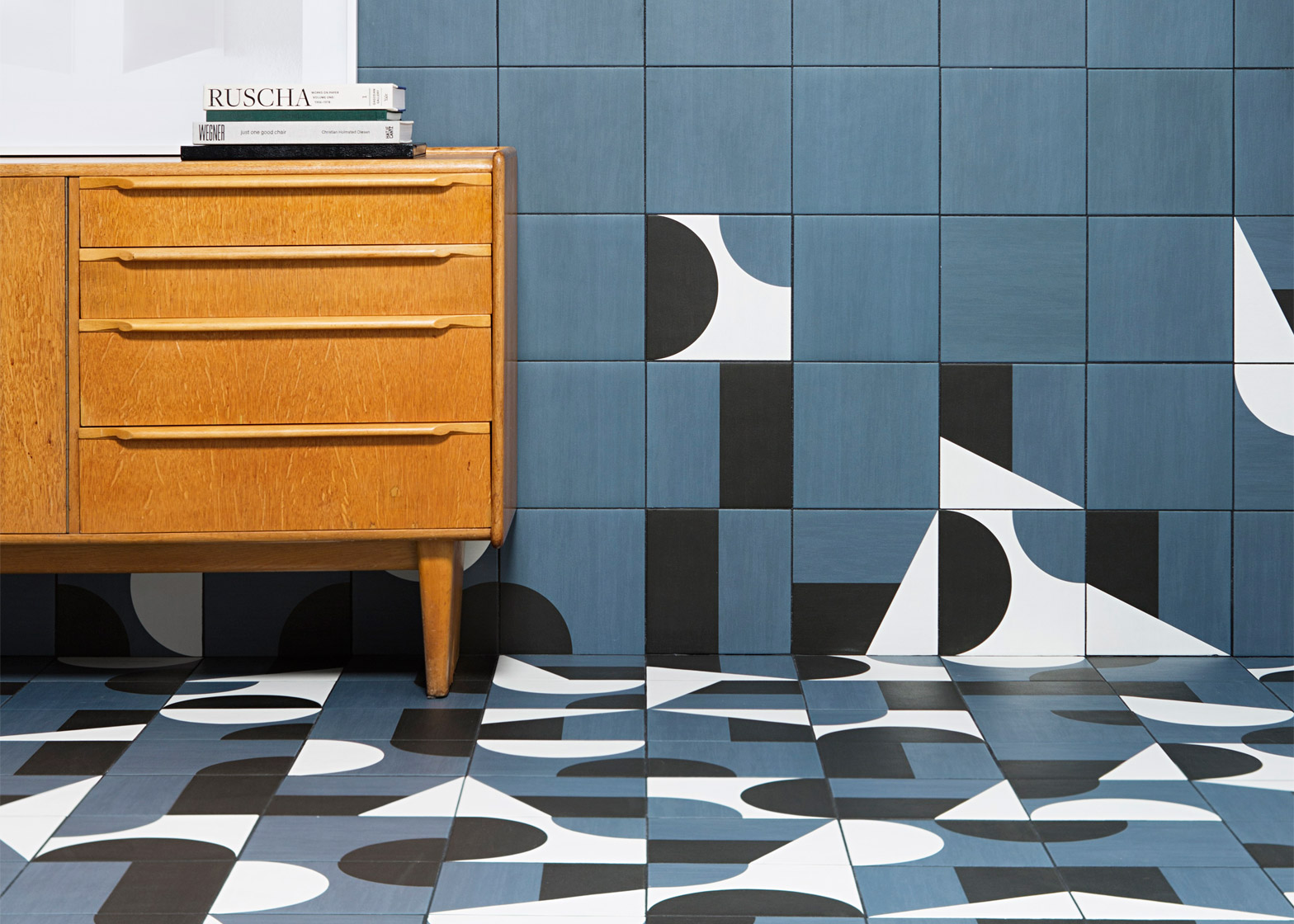Milan 2016: London studio Barber and Osgerby has created a set of patterned geometric tiles, and a range of ceramic blocks that can be stacked to form ventilated sunscreens.
The first of the two collections for Italian brand Mutina is named Puzzle, and comprises a variety of different tile designs intended to be used in combinations.
Semi-circles, triangles and rectangles in three hues cover the square tiles, which are also available as single-coloured pieces.
"The Puzzle collection is a game with infinite outcomes," said studio founders Edward Barber and Jay Osgerby, who won the 2015 London Design Medal. "The simple geometric shapes become softer and more fluid as the puzzle grows, allowing patterns to ebb and flow."
"Objects emerge like maps, islands or clouds, with endless possible permutations, meaning that whenever Puzzle is used it will always be unique," the duo added.
They noticed that the geometric patterns created images like an abstracted map. This influenced the choice of eight available colours, which are based on and named after European islands.
The neutral colours represent the northern isles of Faroe, Gotland, Aland, Anglesey and Skye, while the warmer and brighter shades are associated with the Mediterranean islands of Crete, Milos and Murano.
Each of these families includes six graphic patterns in three colours, a set of two symmetrical patterns in two colours called Edge, and three solid-colour variations.
Barber and Osgerby, who are best known for designing the London 2012 Olympic torch, also designed a collection of "three-dimensional tiles" named Mistral. The shapes are based on Mediterranean roof tiles that are sometimes used as partitions.
"The Mistral tile started from a simple detail taken from Italian ancient barns and farm buildings," the duo said. "Often seen in the countryside are terracotta tiles placed on their ends as a way of providing natural ventilation."
"They are positioned to create a flow of air in and out of the building, responding to wind direction of the area," they continued. "We noticed how they also become a type of louvre; screening and revealing views, and creating light and shade in ancient solid stone walls."
The Mistral blocks are similarly created for building sculptural louvred walls or sunscreens. Components can be used vertically and horizontally, and angled to control the amount of light and air that it let through.
Mutina has worked with a variety of prominent designers on tile collections, including the Bouroullec brothers, Inga Sempé and Konstantin Grcic. Barber and Osgerby previously worked with the brand on the Mews collection.
Puzzle and Mistral will be presented at this year's Salone del Mobile furniture fair in Milan, taking place from 12 to 17 April 2016.
Barber and Osgerby founded their London company in 1996, and now oversee three studios – all based under one roof – with different areas of focus. Barber and Osgerby is primarily for industrial design, Universal Design Studio is responsible for architecture and interiors, and Map works on tech-focused projects.
Recent projects include an entrance pavilion for London's Frieze Art Fair, a range of paper lanterns and a kit of "building blocks" for creating internet-connected products.
For job opportunities at Barber & Osgerby, visit their company profile on Dezeen Jobs.

